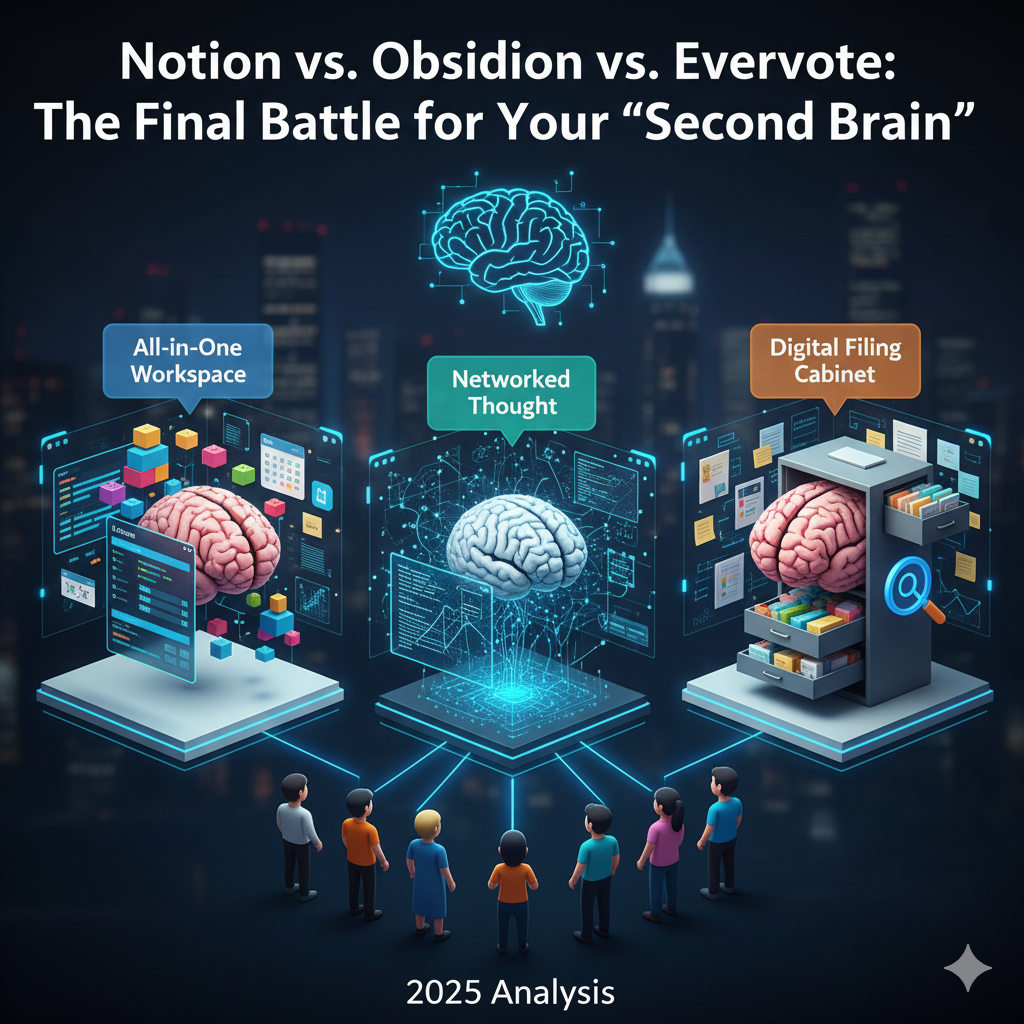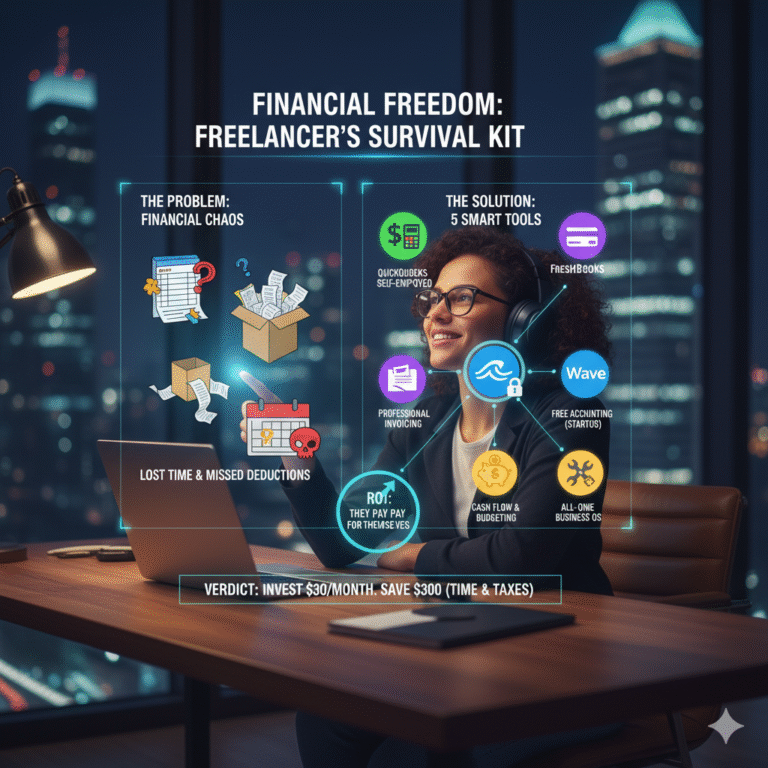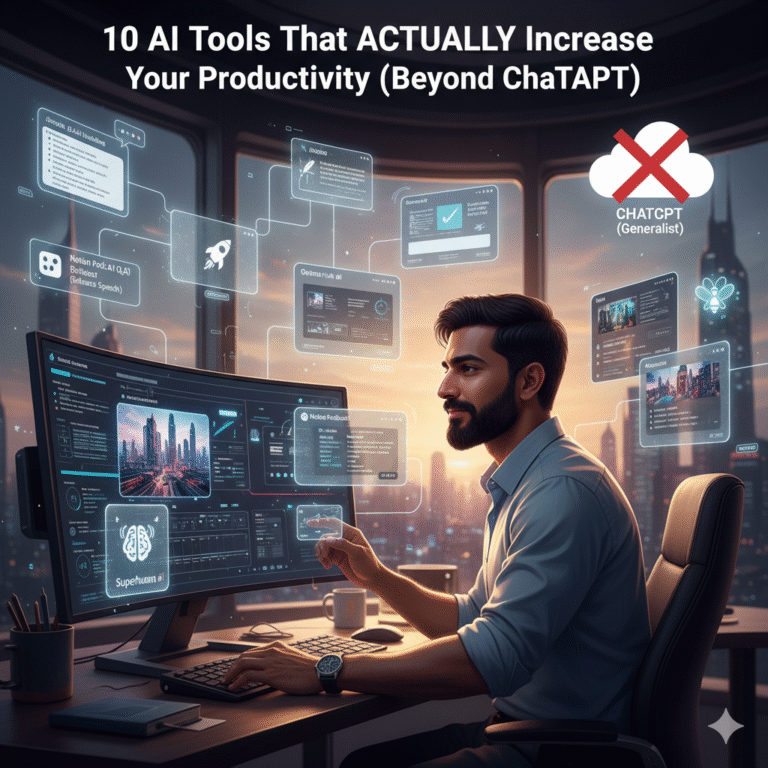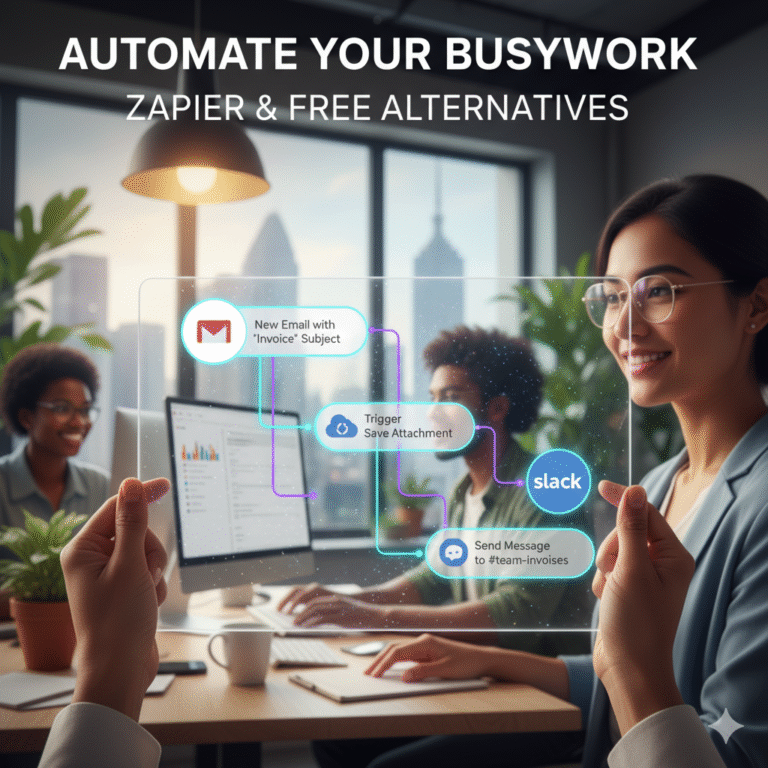Notion vs. Obsidian vs. Evernote: The Final Battle for Your “Second Brain” (Full 2025 Analysis)
We are drowning in information. We have scattered notes, bookmarked articles, random shower thoughts, and critical project details spread across a dozen different apps, notebooks, and email drafts. The promise of a “Second Brain”—a single, centralized digital system to capture, organize, and connect all your knowledge—has never been more appealing. But choosing the *right* tool is a crippling decision.
You are likely stuck in “tool paralysis,” reading this article because you are caught in the gravity of the three biggest players in the game: **Notion, Obsidian, and Evernote**. This isn’t just a software choice; it’s a commitment to a philosophy of how you will manage your entire life.
This is the definitive 2025 analysis. We’re not just comparing features. We are comparing their core philosophies to help you make the right choice *once*. We’ll break down the pros, cons, and ideal user for each, so you can finally stop switching apps and start building your life’s work.
The Contenders: A Quick Philosophy Check
Before we compare, you must understand what each tool was *built* to do.
Evernote: The Digital Filing Cabinet
Evernote is the veteran. It was built for one simple, powerful purpose: **to capture and retrieve information**. Its core idea is a massive, searchable database of notes, web clips, PDFs, and images. It’s the ultimate “junk drawer”—you throw everything in, and you trust its powerful search to find it later.
Notion: The All-in-One “LEGO” Workspace
Notion is the all-in-one challenger. Its philosophy is **”building blocks.”** A Notion page is not just a note; it’s a blank canvas where you can add databases, calendars, Kanban boards, galleries, and more. It’s designed to replace not just Evernote, but also Google Docs, Trello, and Asana. It’s a tool for *building* systems.
Obsidian: The “Networked Thought” Tool
Obsidian is the “nerd’s” choice, and that’s a compliment. Its philosophy is **”networked thinking.”** It is not built on a database; it’s built on a folder of local, plain-text files on your computer. Its power lies in *connecting* notes via “bi-directional links,” creating a web of knowledge (a “graph”) that mimics how your own brain works.
Head-to-Head Comparison: The 6 Key Factors
Let’s break down the practical differences that will affect your daily life.
Factor 1: Ease of Use & Learning Curve
Evernote: The clear winner in simplicity. You open it, you create a new note, you put it in a notebook. It works just like a physical filing cabinet. The learning curve is almost zero. It’s intuitive and “just works.”
Notion: Moderate learning curve. It’s easy to start typing on a blank page. But to unlock its true power, you *must* learn how its databases, relations, and rollups work. This can take a few weeks and be intimidating for non-technical users. You start simple, but the ceiling is very high.
Obsidian: The steepest learning curve. Out of the box, it’s a dead-simple text editor. But its *entire* power is hidden in its “core plugins,” “community plugins,” and learning the “Zettelkasten” or “networked note” methodology. You have to *build* your system from the ground up. This is a feature, not a bug, but it’s a lot of front-loaded effort.
Factor 2: Flexibility & Customization
Evernote: Very low flexibility. You get notes, notebooks, and stacks. You can’t change the structure. This is its strength for people who want a rigid, simple system.
Obsidian: Infinite flexibility. Because of its open-source-style community plugins, you can turn Obsidian into *anything*. A to-do list, a calendar, a kanban board, a long-form writing app. If you can dream it, there is a plugin for it. You are the architect.
Notion: High flexibility, but within a “walled garden.” Notion gives you all the “LEGO bricks” (databases, calendars), but you can only use *their* bricks. You can build incredible, beautiful, powerful dashboards, but you are limited by what Notion decides to build. It’s less “build anything” and more “assemble anything.”
Factor 3: Note-Taking & Linking (The “Second Brain” Core)
Evernote: Excellent at *capturing* (its web clipper is still the best), but poor at *connecting*. Linking between notes is clunky and an afterthought. It’s a “write and forget” system.
Notion: Good at both. You can easily type “@” to link to any other page in your workspace. Its database “relations” feature is a structured way to link (e.g., link a “Project” database to a “Tasks” database). It’s very organized.
Obsidian: This is its superpower. Obsidian is built on bi-directional linking. When you link to Note B from Note A, Note B *automatically* knows it was linked to. This creates a “graph” of your knowledge, allowing you to see hidden connections between ideas. This is the only tool of the three truly built for “networked thought.”
Factor 4: Collaboration & Team Features
Notion: The undisputed champion. Notion was built from the ground up for teams. You can share pages, comment, assign tasks, and build entire company wikis and project management systems that everyone works from. It is a true collaborative workspace.
Evernote: Has basic sharing features (“Evernote Teams”), but they feel bolted on. It’s not a real-time collaborative tool like Google Docs or Notion. It’s more like “sharing a file.”
Obsidian: The worst by a mile, on purpose. Obsidian is a local-first, offline-first tool. Your files are on *your* computer. While you can pay for “Obsidian Sync,” it’s for syncing *your* devices, not for team collaboration. This is a solo tool for a solo thinker.
Factor 5: Data Privacy & Ownership
Obsidian: The clear winner. Your notes are plain text (.md) files on your local hard drive. You own them 100%. If Obsidian (the company) disappears tomorrow, your notes are perfectly safe and readable. You are not locked into any proprietary format. For privacy-conscious users, this is the most important factor.
Notion: You are 100% reliant on their cloud. Your data lives on Notion’s servers. If Notion goes down, you have no access to your “brain.” While you can export your data, it’s in a format that’s hard to use elsewhere. You are in a “walled garden.”
Evernote: The same as Notion. Your data is on their servers in a proprietary format. You are “renting” access to your own notes.
Factor 6: Pricing & Business Model
Obsidian: 100% free for personal use. The “Personal” license is free forever. You only pay if you want their official “Sync” ($8/mo) or “Publish” ($8/mo) services. You can also sync for free using iCloud, Google Drive, or Syncthing (if you’re technical).
Notion: A very generous free plan for personal use. The free plan is all most solo users will ever need. You only pay for team features, advanced integrations, or if you are a “power user” (e.g., larger file uploads).
Evernote: The most restrictive. The free plan is now extremely limited (it’s basically just a trial). To get any real use, you *must* pay for a “Personal” or “Professional” plan. This has frustrated many long-time users.
The Verdict: Who Is Each Tool *Really* For?
There is no “best” tool. There is only the best tool *for you*.
Choose Evernote If…
- Your #1 priority is fast, easy capture and search.
- You are not a “tinkerer” and you hate customization. You want a tool that “just works” out of the box.
- You think of your notes as a “filing cabinet” or “junk drawer,” not a “connected web.”
- You are willing to pay for simplicity and reliability.
Choose Notion If…
- Your #1 priority is collaboration and “all-in-one” power.
- You want to build systems, manage projects, and run your business or life from one place.
- You love structured data (databases, tables, calendars) and want to create beautiful, functional dashboards.
- You are not concerned about data privacy (living in the cloud) and are comfortable with a “walled garden.”
- You work on a team. This is the best choice for teams, period.
Choose Obsidian If…
- Your #1 priority is data ownership, privacy, and “future-proofing” your notes.
- You are a solo thinker (writer, researcher, student, academic) who wants to connect ideas.
- You love to “tinker,” customize, and build your own perfect system from scratch.
- You are excited by the idea of “bi-directional linking” and a “graph” of your knowledge.
- You want a tool that works 100% offline and is lightning fast.
Conclusion: Stop Choosing, Start Doing
The hard truth is that all three of these tools are incredible. The time you are spending watching “vs” videos on YouTube and reading 20 articles (like this one) is time you are *not* spending capturing your ideas.
Here is the final advice: Pick the philosophy that resonates most with you *today*. Download it, and commit to using it *exclusively* for 30 days. The “best” second brain is not the one with the most features; it’s the one you build a consistent, daily habit of using.






